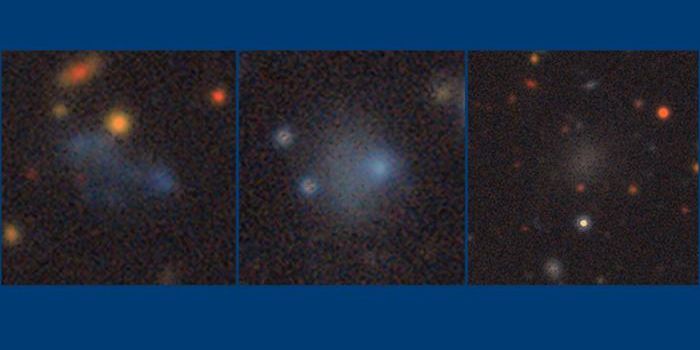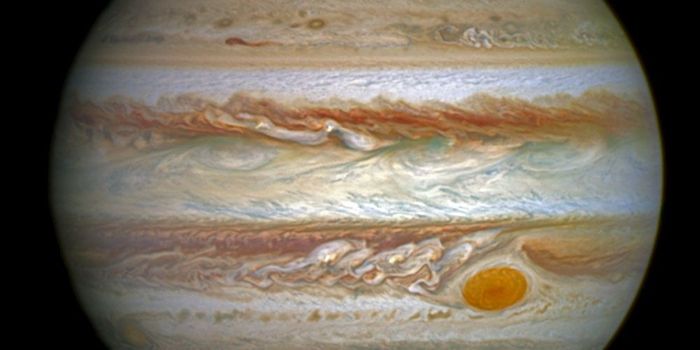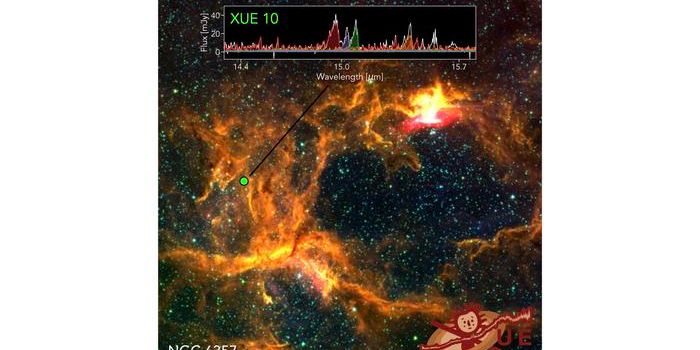Two Behemoth Galaxies From the Early Universe Are Merging
Astronomers are in awe after using the Atacama Large Millimeter/submillimeter Array (ALMA) in Chile to spy on a pair of hyper-luminous starburst galaxies leftover from the early universe.
Image Credit:
It wouldn’t be the first time astronomers peered at this particular blip in the sky, but we can't ignore the significance of this observation, as the findings could drive further scientific research.
Some of the first observations of this celestial object happened by way of the European Space Agency's Herschel Space Observatory, and investigations with the Atacama Pathfinder EXperiment (APEX) telescope soon followed.
Both initial observations helped lay the red carpet for ALMA, which discerned vital details such as its distance from Earth and the notion that there were, in fact, two separate galaxies residing in this blip. The findings have been published in The Astrophysical Journal this week.
Related: ALMA captures images of a stunning protostar explosion
Experts collectively refer to the two galaxies as ADFS-27 rather than naming each one individually. Both reside approximately 13 billion light years away from Earth in the direction of the Dorado constellation. 300,000 light years of space separates each of the galaxies, but that distance shrinks by hundreds of miles every second as they gravitationally associate with one another.
“Discovering a hyper-luminous starburst galaxy is an extraordinary feat, but discovering two – this close to each other – is amazing,” exclaimed study lead author Dominik Riechers, an assistant professor of astronomy at Cornell University.
“Considering their extreme distance from Earth and the frenetic star-forming activity inside each, it's possible we may be witnessing the most intense galaxy merger known to date.”
Related: The Hubble Space Telescope spotted a galaxy merger
It's challenging enough to find just one of these kinds of galaxies on its own. On the other hand, happening upon two within such close proximity of one another and in the midst of a merger is an entirely different class of discovery in and of itself. Once the merger is complete, the two galaxies will form a single massive elliptical galaxy.
Modern observations underscore how ADFS-27 has exponentially more star-forming matter than the Milky Way does. In fact, Riechers goes out on a limb to suggest that it’s still forming new stars today.
“Much of this gas will be converted into new stars very quickly,” Riechers continued as he described the circumstances surrounding ADFS-27. “Our current observations indicate that these two galaxies are indeed producing stars at a breakneck pace, about one thousand times faster than our home galaxy.”
As it turns out, ALMA was the ideal tool for analyzing ADFS-27. With the sheer number of bright stars that the galaxy duo packs, the dense clouds of dust surrounding ADFS-27 absorb starlight and glow in ways that ALMA quickly discerns.
We still have much to learn about ADFS-27, but with future observations, we might be able to solve more mysteries. Perhaps newer space exploration tools will also be of some help, such as the James Webb Space Telescope.
Source: Cornell University via Phys.org









